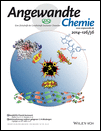SuFEx-Based Synthesis of Polysulfates†
This work was supported by the Skaggs Institute for Chemical Biology (K.B.S.), the National Institute of General Medical Sciences, the National Institutes of Health (R01GM087620 to V.V.F.; the content is solely the responsibility of the authors and does not necessarily represent the official views of the National Institutes of Health), and the National Science Foundation (CHE-0848982 and CHE-1302043 to V.V.F.). J.S.O. acknowledges an NSF graduate fellowship. We thank Prof. S. Nazarenko, Prof. J. S. Wiggins, J. Tu, J. Goetz, and K. Meyers (University of Southern Mississippi) for help with the processing and measuring of mechanical and transport properties, Prof. P. Iovine (University of San Diego) for help with DSC and TGA measurements, Prof. M. G. Finn and Dr. L. Krasnova (TSRI) for helpful discussions, C. Higginson and Dr. K. Breitenkamp (TSRI) for help with the GPC analyses, Wyatt Technology for providing access to a demo MALS instrument, Dr. A. O. Meyer for guidance with the analysis, and Dow Agro for the generous gift of sulfuryl fluoride. SuFEx=sulfur(VI) fluoride exchange.
Abstract
High-molecular-weight polysulfates are readily formed from aromatic bis(silyl ethers) and bis(fluorosulfates) in the presence of a base catalyst. The reaction is fast and proceeds well under neat conditions or in solvents, such as dimethyl formamide or N-methylpyrrolidone, to provide the desired polymers in nearly quantitative yield. These polymers are more resistant to chemical degradation than their polycarbonate analogues and exhibit excellent mechanical, optical, and oxygen-barrier properties.




